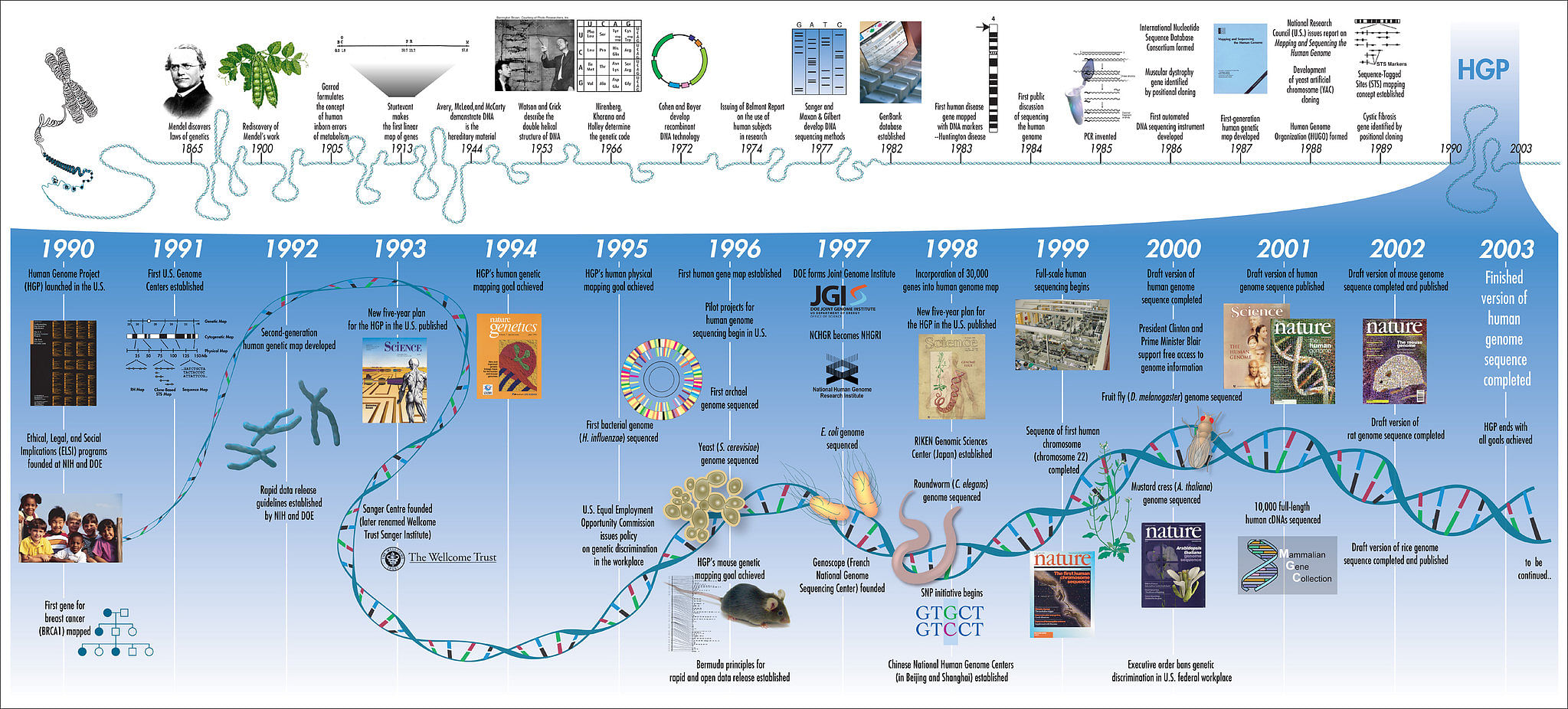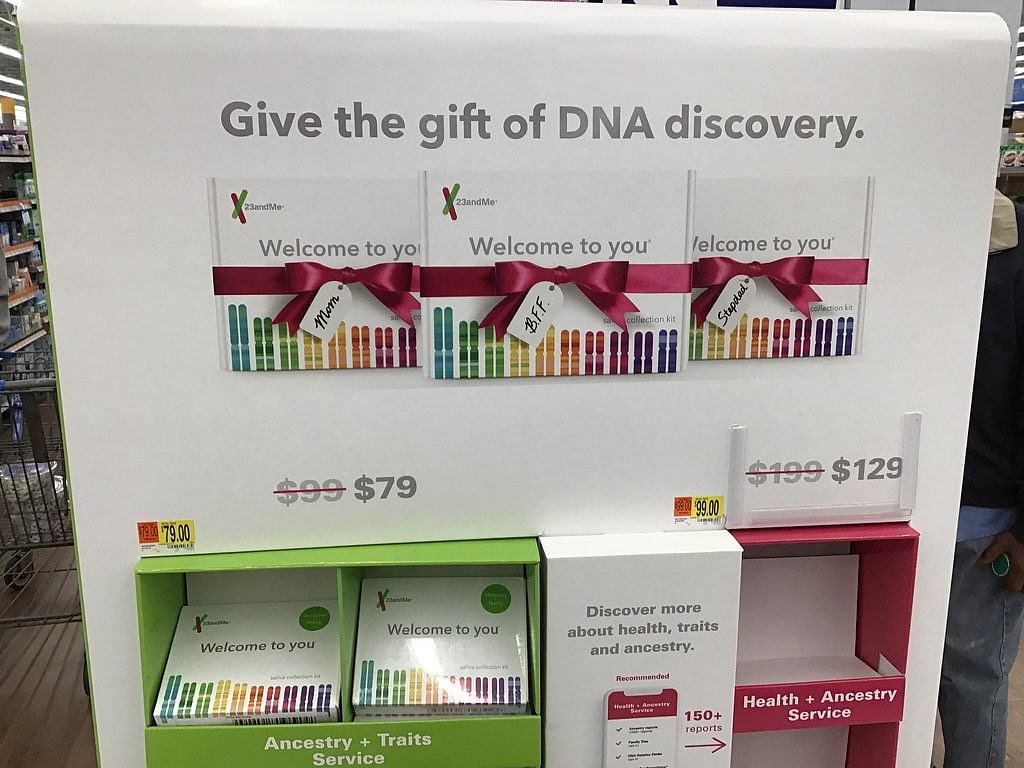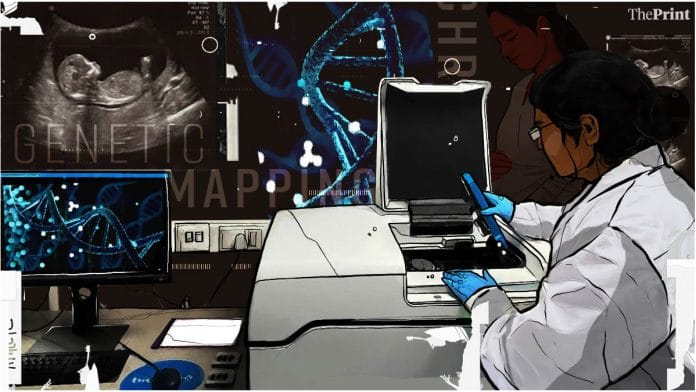Bengaluru: Anika Mohan, a 30-year-old schoolteacher from Bengaluru, dreams of having a large family. Mother to a two-year-old son, her journey toward parenthood wasn’t easy. What seemed to be a happy and healthy pregnancy at the age of 27 ended up in a miscarriage after five months.
A science teacher, Mohan immediately knew what to do next. She shelled out Rs 25,000 to perform genetic testing on her miscarried foetus and discovered a chromosomal deformity—trisomy, a condition in which the foetus’ DNA has an extra pair of chromosomes and often results in a spontaneous miscarriage. When she conceived again in 2019, she promptly undertook prenatal genetic testing in the first trimester and was relieved when she got an all-clear.
“On the advice of my doctor, I did it [genetic testing] when I was pregnant with my son to make sure that trisomy wasn’t a recurring problem,” says Mohan. Abnormalities not only raise the risk of miscarriage but can also result in conditions like Down syndrome and reduced life span of the baby.
Ten years after Hollywood actor Angelina Jolie sparked a spike in genetic tests for breast cancer around the world, more and more Indians are lining up to get their genes analysed. They’re doing it not just to detect early signs of cancer but also to test the viability of their pregnancies, get a deeper understanding of who they are, or find out if they have a specific disease-causing gene. And doctors, too, are increasingly prescribing such tests.
“My gynaecologist recommended I do the ‘double marker’ test, which identifies the number of chromosomes in a foetus,” says Bengaluru-based finance professional Vaishali Prasad*, who got both her children genetically tested while she was carrying them. When she had her second child this year, the 36-year-old took non-invasive prenatal testing (NIPT) because it was a geriatric pregnancy—when the mother is over 35. NIPT additionally identifies other chromosomal and genetic abnormalities that can lead to Edwards’ syndrome or Turner syndrome in the foetus.
Apart from signalling potential disorders and diseases, the human genome also holds secrets to why some people are more prone to gaining weight or developing hypertension. Genetic testing can also tell why a person cannot digest certain foods and arm them with the knowledge to prevent or delay negative reactions.
The genetic testing revolution is unfolding at breakneck speed. This month alone, scientists in the United States announced a new method for prenatal genetic testing, while another American study looked at how the analysis could benefit patients with depression. Most importantly, genetic testing helps one in taking active measures to prolong life.
In India, the possibilities of genetic testing are proving to be a fertile ground for many startups. Today, around 20 gene testing labs and 50 startups are working in this space, according to Vedam Ramprasad, CEO, MedGenome, which caters to nearly 10,000 clinicians around the country.
Although India still accounts for a very small share—of around $60 million—in a $17 billion global genetic market, newer technologies are changing the landscape and providing precise answers faster.
Years ago, we used to have a basic cytogenetic test, and we could detect more common genetic diseases such as Down syndrome or Beta Thalassemia. Today, there is increased awareness, and technologies have also been evolving very rapidly, says Dr Mitesh Shetty, head of the Department of Medical Genetics at Manipal Hospital, Bengaluru.
Also read: Stop calling women’s bodies mystery. Medical science just hasn’t paid enough attention to them
The genome jump
When computer science professor Ramesh Hariharan was teaching at Bengaluru’s Indian Institute of Science (IISc) in the late 2000s, he never thought that one day, he would be running a medical company. But together with three colleagues from IISc—Vijay Chandru, Swami Manohar, and V Vinay—he founded Strand Life Sciences in 2013.
It’s one of the first three companies in India that offer genome services directly to the public.
The reason we started looking at genomics is because the year 2000 was the threshold of the Human Genome Project, where there was a realisation that the only way we can fully sequence the genome is through a lot of data and computation, says Hariharan.
The Human Genome Project, one of the largest scientific endeavours in modern world history, ran from 1990 to 2003 and involved thousands of scientists globally, generating the first sequence of the near-complete human genome. Like a genetic blueprint of the human body, this sequence has since been the basis for many medical advances that have resulted in the reduction or effective management of numerous disorders and diseases, from breast cancer to Thalassemia to chromosomal disorders in foetuses.

The project’s influence spread beyond research and academia and inspired scientists like Hariharan to set up their own companies. Around the same time, Mahesh Pratapneni cofounded MedGenome in Bengaluru in 2013.
“We finally ventured into genomics as a small unit in Kochi, and it was primarily because the Human Genome Project was generating a lot of interest,” says Ramprasad.
Both Strand Life Sciences and MedGenome started off as research services catering to academic institutions and pharmaceutical companies, but the cutting-edge pace of the discoveries and development of therapeutic applications enabled them to expand their scope and directly offer services to customers. “We had a choice of doing our work within academia or separately, and we felt that having a private lab could be nimbler and faster moving,” says Hariharan.
In Hyderabad, bio-information scientist Anu Acharya launched Map My Genome in 2013. Prior to that, she had been running a bioinformatics company that built software and manufactured reagents for pharmaceutical research centres. Acharya started Map My Genome with an initial focus on preventive genomic testing that could help people understand and avert lifestyle risks. Today, the company regularly sequences thousands of genome samples and provides genetic counselling to people curious about their genetic propensity for lifestyle diseases like Type 2 diabetes, hypertension, and even propensity for addiction to substances.
Where regular tests failed, genetic testing helped 28-year-old Chennai engineer Raj Kumaran* get to the bottom of what was wrong with his joints.
“It started with lower back pain that radiated a little down my leg,” he says. As the pain spread toward his knees and ankles, his doctors prescribed an HLA B27 gene test, and that’s when he was diagnosed with early Ankylosing spondylitis
The genome is not fully understood, and not all genes are identified. But some gene mutations have repeatedly shown up as strongly correlated with some disorder or disease, and the medical community has a confirmed list of genetic mutations that lead to conditions such as the BRCA mutations for breast cancer. The BRCA gene test is one of the most popular tests that people opt for.
Many screen their genes for diseases such as Beta Thalassemia, spinal muscular atrophy, Gaucher disease, and other metabolism abnormalities.
Doctors, however, also caution against unnecessary panic. A positive mutation doesn’t necessarily result in the illness—it just points to a greater risk of developing it.
“We want to help people understand that they may have a genetic risk for something they might not anticipate, and what necessary precautions they can take to prevent it. We want to show that a lot of it is modifiable,” says Acharya.
Also read: Elvish case puts spotlight on snake venom — science behind the bite & the…
Cheaper, faster, better
For the first 15 years, genetic testing startups knew that the field would remain in its infancy until the demand for real and paid services rises. Earlier, they would provide bioinformatics data to either researchers or pharmaceutical companies.
“In South Asia, we had to invest quite a bit of resources to create awareness so that we could have some baseline data for the Indian population,” recalls Ramprasad.
Most companies started to see some growth six to seven years ago, and costs have come down since then.
“We offered our first tests at the cost of Rs 25,000,” says Acharya. “And this year, we launched tests for Rs 6,000. Tests at these price ranges today are even better, screening for 265 drugs or 100 or so conditions. That’s how much it has changed over the last few years.”
Even personalised genetic treatments, which used to cost upwards of Rs 20 lakh a few years ago, are now available for about Rs 2-3 lakh for rare genetic disorders like Duchenne muscular dystrophy (DMD). The condition is characterised by progressive muscle degeneration and typically affects young boys. It can now be identified through a mutation in the dystrophin gene.
“While that is still a lot, it has definitely made DMD management much more accessible,” says Berty Ashley, a Bengaluru-based molecular geneticist at the Dystrophy Annihilation Research Trust.
In the context of rare diseases like DMD, innovative treatments such as Zolgensma are emerging, offering hope for patients and their families.
Most DMD patients do not make it past the age of 25. In Europe and North America, DMD occurs in approximately six in every 1,00,000 individuals. In India, the number is closer to 1 in 3,500 male births.
“When I started working in the field in 2014, there were only two tests you could take, and they only confirmed you had DMD. There wasn’t anything you could do about it,” recalls Ashley. Today, a person can get tested for DMD for less than Rs 6,000.
When personalised treatment came in with CRISPR technology, genetic engineering became possible to manage the disease, extending the lifespan of boys with this disorder.
“While Rs 2-3 lakh is still a lot, it has definitely made DMD management much more accessible,” Ashley adds. He predicts that the cost of therapies could drop to as low as Rs 30,000.
Five years ago, V Venkat would have had to submit his daughter’s blood and urine samples to find out if she had inherited Hunter syndrome from her mother. A result of a mutation in the IDS gene, it is an extremely rare genetic disorder in which the body fails to metabolise glucose and sugar.
He started worrying about it after his brother-in-law recently succumbed to it, as Hunter syndrome causes developmental disorders leading to a lower lifespan.
Thankfully, he adds, his daughter’s test came out negative.
Popular demand
A decade ago, if someone had to get themselves screened for a rare disease, they would have to travel miles to submit samples at the nearest specialised lab—and sometimes even move across cities.
Today, most people can just order kits online, even available on Amazon and costing anywhere between Rs 10,000 and Rs 30,000.
To get one’s genome sequenced, an individual has to submit a cheek swab in the kit and send it back or wait for it to be collected, after which it typically takes 14-21 days to sequence and process the data.
Samark Singh*, a 40-year-old IT professional from Pune, heard about ancestry tests and bought a kit online. His results showed that he had inherited the maternal haplogroup H3g, which travelled from Africa to India over thousands of years.
“They also provided more results such as predisposition to certain lifestyle diseases like heart health or genetic mutations for inherited diseases like cystic fibrosis,” says Singh.
Companies aren’t only driven by their own findings but also by consumer demand.
“We started noticing that people wanted more data about nutrition and fitness—like whether they have the propensity to be deficient in a vitamin, which is an inherited risk. So, we are now able to offer those tests as well,” says Acharya.
A lifestyle genetic screening test, which he took on a whim, helped Sekkizhar Prasanna, 38-year-old Chennai-based director of a desalination company, make sense of the little quirks of his body. Every time he had coffee or an energy drink like Red Bull, he would fail to sleep that night. And milk gave him discomfort—rankled like an unrelieved itch. The answers, he realised, were in his DNA.
“I received a saliva collection kit through a courier. I had to spit twice in a tube containing another liquid, which I assume is to preserve the DNA for a few days,” he explained. After 15 days, Prasanna got his answers over email. He learned that his intolerance to lactose and caffeine metabolism were genetic. “It also showed me that I may be better off eating a low-fat diet, and that has really shown results for me.”
The test also shed light on his sensitivity to salt (AGT gene), the tendency for inflammation after exercise and thus requiring longer rest periods (C reactive protein), fat loss response to working out (PPARD), propensity for obesity, and hypertension.
“Today, there is so much awareness about the availability of genetic tests for some genes and mutations that more and more people are constantly getting tested,” says Ashley.

Such tests are always preceded and succeeded by genetic counselling, explains geneticist Mitesh Shetty. Lifestyle mutations such as those that increase the likelihood of developing diabetes or cardiovascular disease are associations and not necessarily causes, and many genetically inherited conditions, including intellectual disability, need samples from affected people first.
Genetic counselling today is a mandatory accompaniment to these reports, and counsellors explain how exactly to interpret these highly personalised results and understand the risks they imply, says Shetty.
New research and therapeutics
The access to data of this scale also allows genome testing companies to perform their own research and look for trends. While most of these startups have published their own papers, genetic testing and pattern recognition have helped bring previously unknown genetic associations to light.
Hepatologist Abby Philips from Rajagiri Hospital, Kerala, says he prescribes genetic tests for specific conditions such as Wilson’s disease, which leads to excessive copper deposits in the liver and brain. Some of his liver-related findings include discovering a mutation in the gene ABCC2, which leads to a rare disease called Dubin-Johnson syndrome.
“There were no other specific and identifiable risk factors in the patient or among the family members. And never in medical literature has Dubin-Johnson syndrome ever found to be associated with chronic liver disease,” explains Philips.
But when his team sequenced a patient’s genome, they found the first identifiable link to the gene that could predispose patients to chronic liver disease instead of only jaundice.
The Council of Scientific & Industrial Research, too, has recently begun offering a new genetic testing method called optical genome mapping, which it calls next-gen cytogenetics. It can detect a wide variety of genetic abnormalities. Not only that, the processes involved in genetic sequencing and testing have also changed.
For patients and parents, genetic testing can hold answers to symptoms that can’t be diagnosed easily.
The information Mohan got about her miscarriage put her in a better position to make decisions about her family and future.
And she knows a few women who have had miscarriages due to trisomy.
“In many cases, I’ve seen orthodox in-laws blame the woman for her miscarriage. But trisomy is inherited from the father’s side. They found solace in genetic testing,” she says.
(Edited by Humra Laeeq)






